Yang Qi’s, who has lived in Dusseldorf for 30 years, originated from Wuhu, China. Recently he has shortlisted for ‘Wolfgang Hahn Preis’ Wolfgang International Contemporary Art Award, Cologne Ludwig Museum, 2021. There are 43 artists nominated for this award, recommended by important institutions of contemporary art in Europe and the US, have been pioneers of art that have been active on the international’s stage for many years. For example Thomas Bayle, Wolfgang Laib, Christian Boltanski, Tracey Emin, William Kentridge, Brigitte Kowanz, Zoe Leonard etc.
Here are some photos from his recent solo exhibition ‘ Here is There’ at Chun Art Museum in Shanghai, 2021. 



Today we would like to share a collection of his large paintings, with the article ‘Dialogue between abstract, figurative and contemporary’ by Beate Reifenscheid, Prof. Dr Director of Ludwig Museum Koblenz.
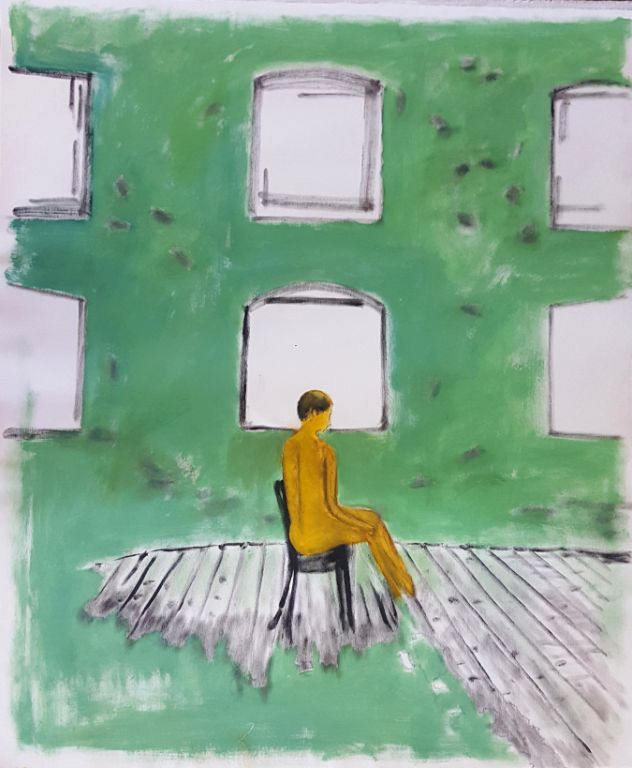 Alone is not lonely 2020, Acrylic-on-canvas, 100cmx80cm
Alone is not lonely 2020, Acrylic-on-canvas, 100cmx80cm
Yang Qi is renowned as an abstract painter in Germany. By the end of the 1990s, the viewers had become familiar with his free brushwork and sharpness, the impasto and rich texture, and retained Chinese culture with the blackest Chinese ink in his painting.
 Get together, 2020 Acrylic on canvas 100cmx80cm
Get together, 2020 Acrylic on canvas 100cmx80cm
From many perspectives, Yang Qi has seriously challenged Chinese brush painting that has dominated Chinese art from ancient times to the present. He uses his brush unrestrainedly, powerfully, exploring extremely concise compositions, fascinated the simplest of forms. If his new language in his painting, can clearly illustrate Chinese spirit and reflect the colour changes in those brush works; then many of his sculpting structures are undoubtedly nurtured. This language works well for his particularly eye-catching large-scale abstract paintings in mixture materials especially. The texture and volume of asphalt surface, vividly express the difference between it and Chinese ink painting. The artistic characteristic is that he can use a mixture of ink and water to paint on thin rice paper and paint with asphalt instead of ink. The texture, especially the rhythm his brush makes in his painting, reminds us of the mixed material painters, the famous German abstract artists Homer and Schumacher. The works reflect their endeavour, the paintings achieved a vivid and lively nature, and embody the perfect abstraction’s figurative expression.
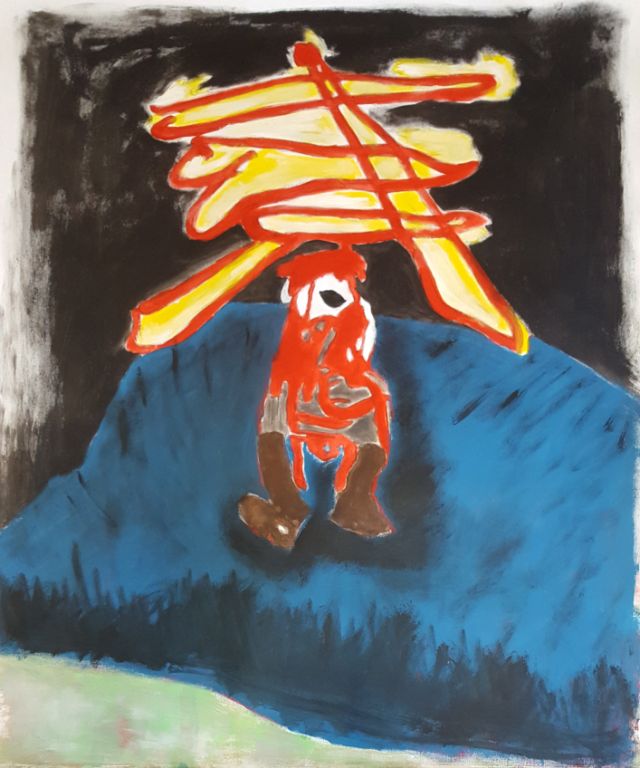 One night story, 2020 Acrylic on canvas 100cmx80cm
One night story, 2020 Acrylic on canvas 100cmx80cm
 Magic boy, 2020 Acrylic on canvas 100cmx80cm
Magic boy, 2020 Acrylic on canvas 100cmx80cm
Homer created his fascinating ‘Aitna – Circular’ Works in the 90s. He incorporated volcanic stones into the sculpture. On the other hand, Schumacher used big fast asphalt fragments and sand to mix abstract and real natural materials. They clearly stated that the creative power of nature and its auxiliary materials appearing in the paintings, while also reflecting the abstract painting language of nature itself. It is sufficient to prove that abstract forms are equivalent to the most realistic and concrete. The witness of existence is real. The painting language related to abstract painting is inseparable from its current object conditions; otherwise, it will be greatly distorted in recognition. Because abstract painting emphasises getting rid of the set concrete form. This also applies to a natural and realistic mindset. 1992 Nian Emil – Schumacher wrote his own profound feeling: ‘In fact, painting is always a process of changing form. I have a dialectical view. Break and stand. In this sense, I want to let them explain some paintings. Therefore, I often try to break the picture.’
 The artist as Hermit 2004-19 oil and acryl on canvas 160 cm x 120 cm
The artist as Hermit 2004-19 oil and acryl on canvas 160 cm x 120 cm
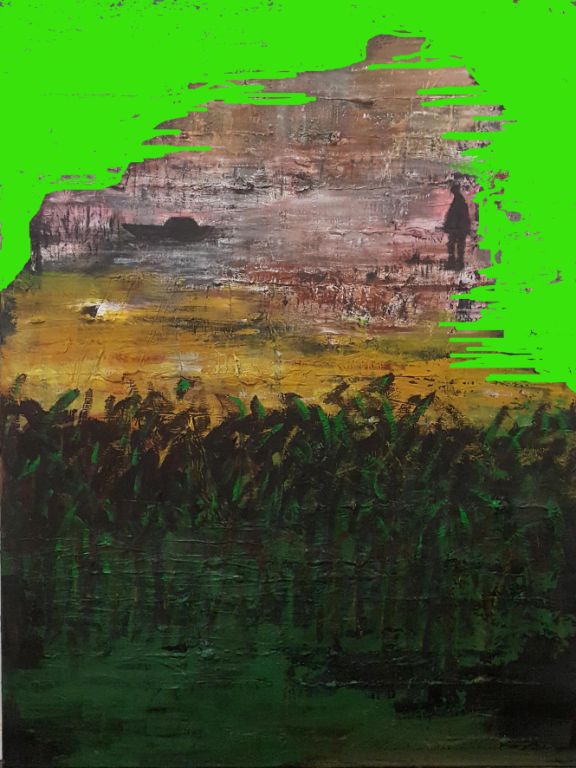 The artist as Hermit 2004-19 oil and acryl on canvas 160 cm x 120 cm
The artist as Hermit 2004-19 oil and acryl on canvas 160 cm x 120 cm
In recent years, Yang Qi’s works have become more intriguing. He has constantly challenged two painting concepts. This is actually in line with the law of contradiction and harmony. For example, the Chinese ink painting developed from Chinese calligraphy is already very abstract. It was not only influenced by Zen Buddhism but also inspired European artists after World War II. Also, in Chinese ink painting and “The “non-figurative” painting produced a direct response. In his second vision, Yang Qi broadened China and Europe’s artistic concepts and questioned abstraction and figurative. Therefore, his easel painting combined the use of comprehensive materials. Although he drew lessons from Homer and Schumacher, he devoted himself to image painting and was close to the real-life world. Emil Schumacher realised that his paintings could not remain abstract in the long run. So he turned to the image. He was using extremely refined lines to determine the picture. He once said in 1997, “Colour has created a world of mine, but she needs image support. I paint, I combine, and I integrate it all into one. ”
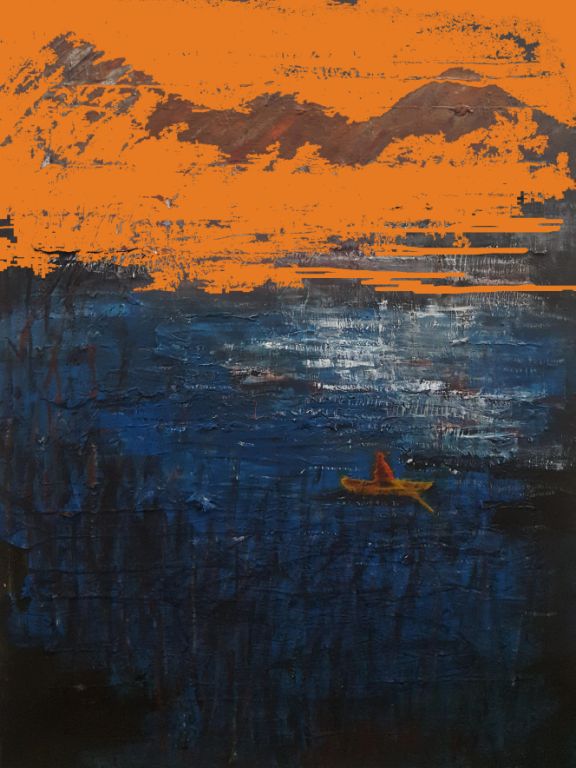 The artist as Hermit 2004-19 oil and acryl on canvas 160 cm x 120 cm
The artist as Hermit 2004-19 oil and acryl on canvas 160 cm x 120 cm
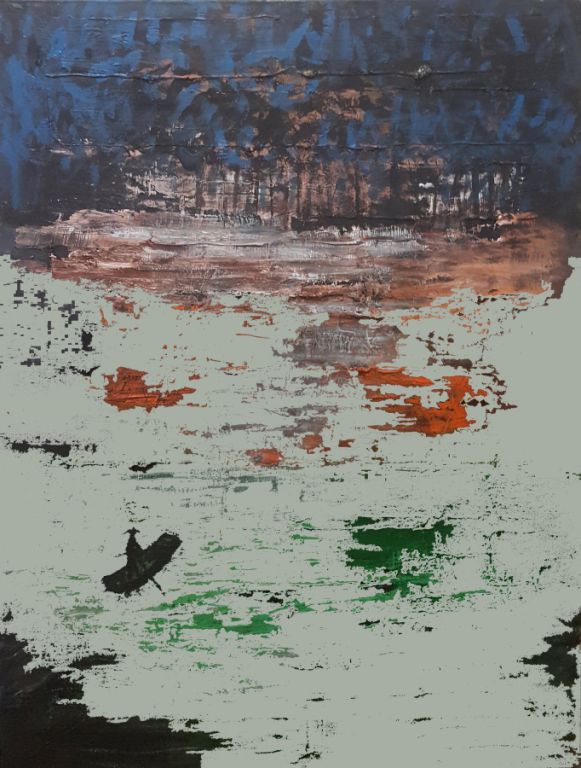 The artist as Hermit 2004-19 oil and acryl on canvas 160 cm x 120 cm
The artist as Hermit 2004-19 oil and acryl on canvas 160 cm x 120 cm
For more than 20 years, Yang Qi has always used various possible expression techniques to inject figures into his paintings. These are clearly reflected in his photographic works, installation art, video works, ceramics, and ink paintings, especially in his easel paintings. Interestingly, these works of his characters still have a more or less abstract feeling to the audience. The audience can tell at a glance that, like the past works, they are a bridge between two cultures. Yang Qi has maintained the particularity of his own cultural model for a long time, and at the same time incorporates elements of Western culture into his art. Obviously, without Yang Qi’s profound foundation in Chinese tradition, his large-scale ink paintings would not have reached such a high level in the past five years. He has mastered the picture’s spatial layout, the exciting plot, including a unique combing of the overall picture. He is unassuming and lives quietly in a profound connection that is more meaningful than Chinese culture. Don’t deliberately insist on what you must win. His expansive free images directly hit the audience, and even the audience often involuntarily enters the plot in his paintings. The plot in his painting comes directly from the centre of his life. The narration of his pictures transcends national boundaries and maintains the cultural origins of various nationalities. Each story has its own history. Some are even personal experiences, but he does not make special statements.
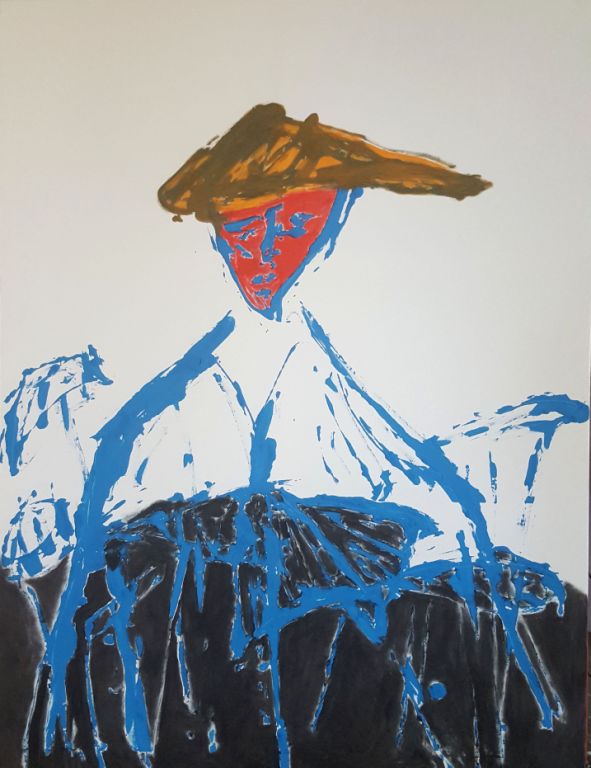 A man with lotus, 2018 Acrylic on canvas 210cmx160cm
A man with lotus, 2018 Acrylic on canvas 210cmx160cm
 Together, 2020 Acrylic on canvas 100cmx80cm
Together, 2020 Acrylic on canvas 100cmx80cm
Yang Qi is good at occupying the whole canvas with a single figure. Eliminate trivial descriptions. From this, it reminds me of the narrative of the plot in a surrealist painting. The compositions of his paintings are specific plots and images that are related to the context. That allows the audience to use their imagination freely.
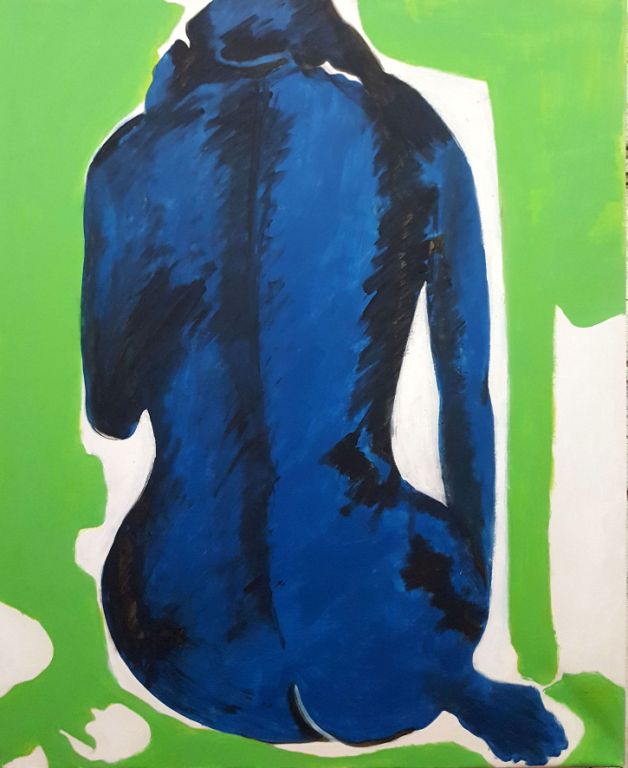 Angelika, 2019 Acrylic on canvas 120cmx100cm
Angelika, 2019 Acrylic on canvas 120cmx100cm
Yang Qi’s easel paintings developed the tradition of the layout. What he is concerned about is how to express the theme. Each painting focuses on the figures and then makes an individual’s artistic description according to their behaviours. Yang Qi uses extremely simple or agitated lines to outline objects. Unlike his ink painting, the figures on the canvas are usually in a specific theme. It expresses a fixed, unchangeable, independent character painting without extra space. Yang Qi’s colour method is also consistent with this form of expression. Thinking back to how Yang Qi succeeded in painting with abstract materials and integrated materials, people will naturally understand how his experience of using materials has given new life to these new works. He used the abstract techniques developed since his 90s to express the realistic figures in his new works uniquely. The narrative festival updated the artistic expression of ancient Chinese painting.
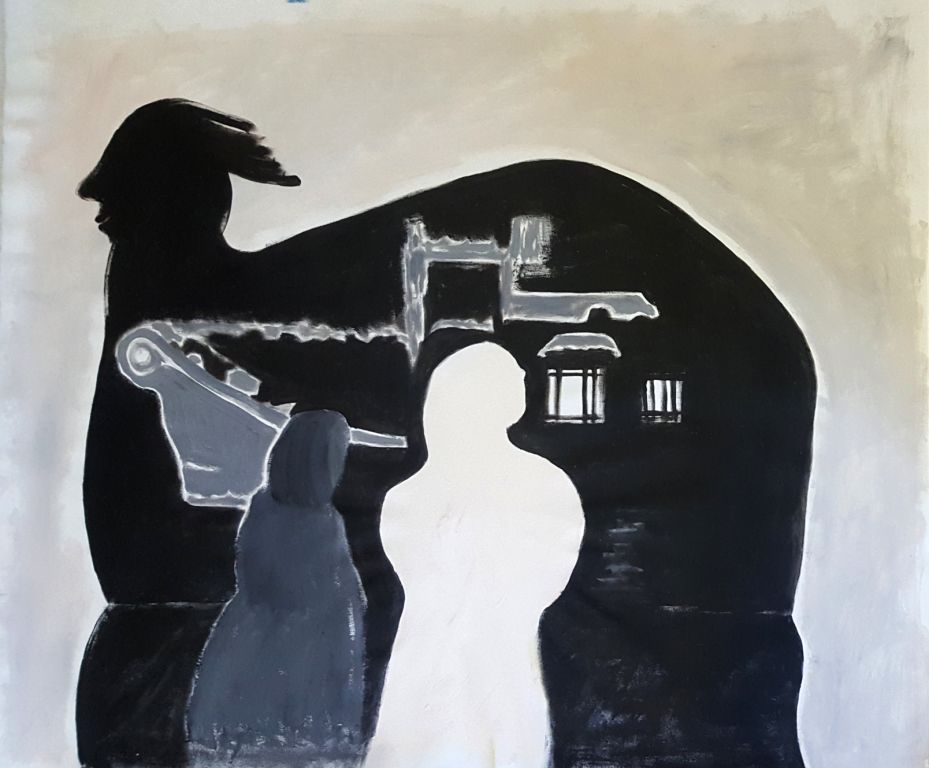 Theater, 2020 Acrylic on canvas 100cmx80cm.
Theater, 2020 Acrylic on canvas 100cmx80cm.
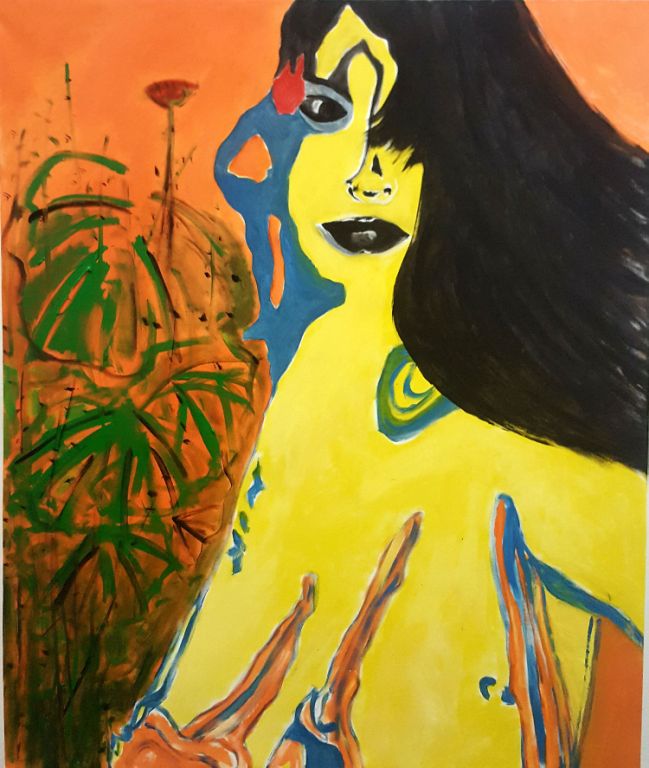 Monika, 2019 Acrylic on canvas 120cmx100cm
Monika, 2019 Acrylic on canvas 120cmx100cm
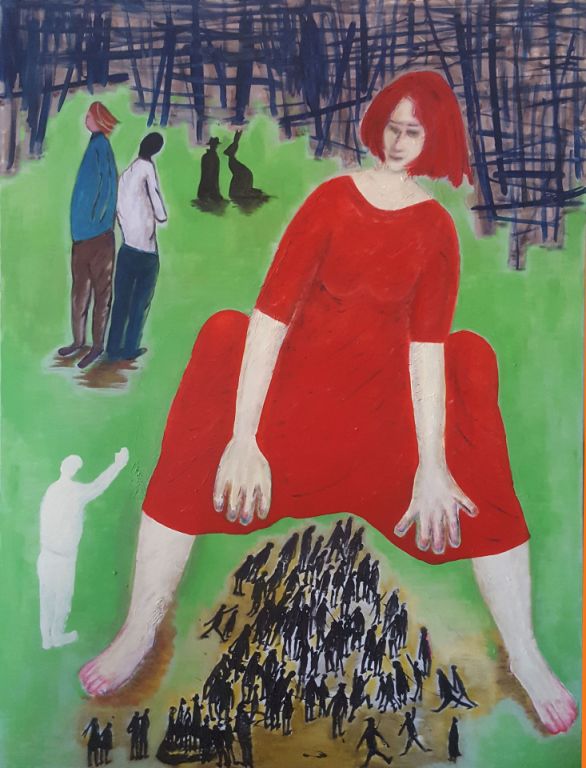 Venus and her friends, 2018 Acrylic on canvas 210cmx160cm
Venus and her friends, 2018 Acrylic on canvas 210cmx160cm
Yang Qi’s painting art has three decisive themes: figure painting (portraits, and other styles), landscape (mountain, water), and animals (especially birds). For Yang Qi, these all belong to his special category of figure painting and object painting. He always observes and watches them in his life. This will help the audience understand the art and character composition of Yang Qi’s paintings. At least the audience can find themselves to explain Yang Qi’s paintings. Simultaneously, he expanded the spatial distance through close-ups of the pictures’ Colour and texture, highlighting the difference between the real world and the other art world. The characters in Yang Qi’s paintings live vividly in his traditional Chinese painting environment.
 Illusion 2018 Acrylic on canvas 210cmx160cm
Illusion 2018 Acrylic on canvas 210cmx160cm
 Where you are from, 2020 Acrylic on canvas 100cmx80cm.
Where you are from, 2020 Acrylic on canvas 100cmx80cm.
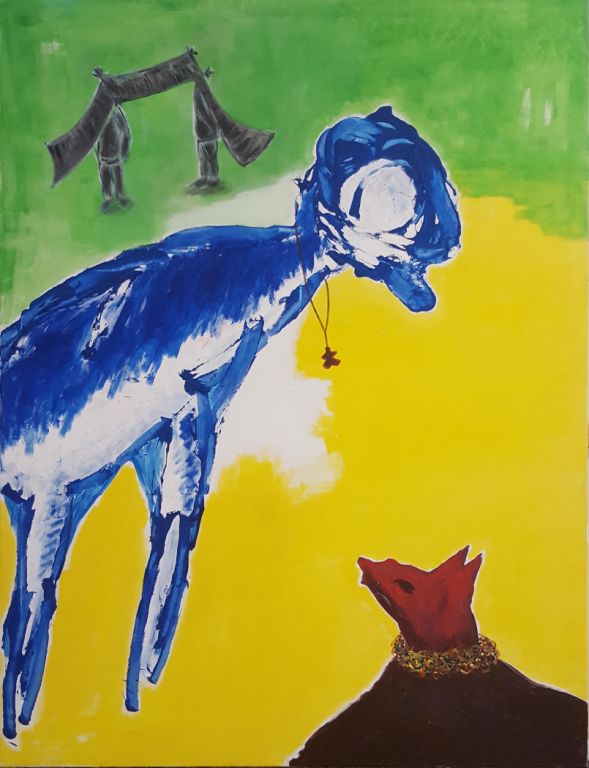 A friend Indeed, 2018 Acrylic on canvas 210cmx160cm.
A friend Indeed, 2018 Acrylic on canvas 210cmx160cm.
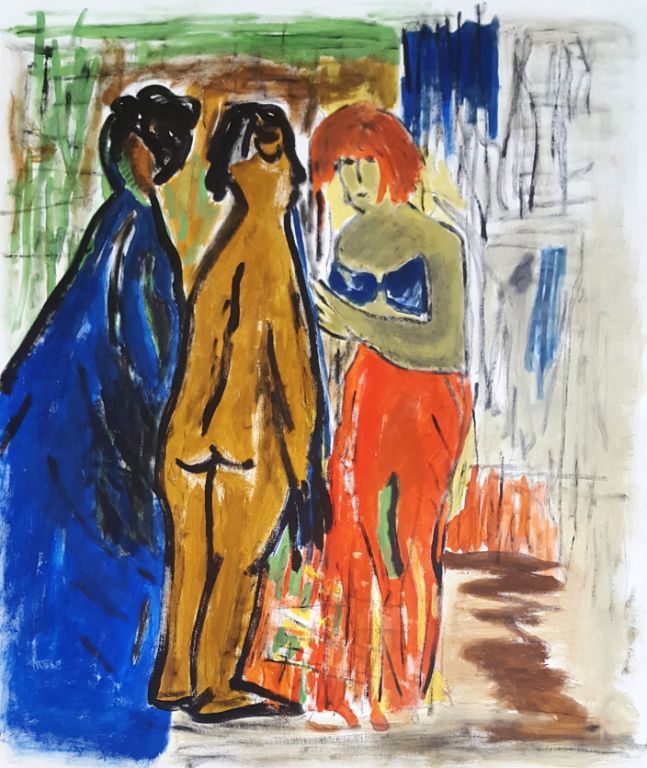 We love art, 2020 Acrylic on canvas 100cmx80cm.
We love art, 2020 Acrylic on canvas 100cmx80cm.

For any enquiries, please email: info@artchinauk.com
